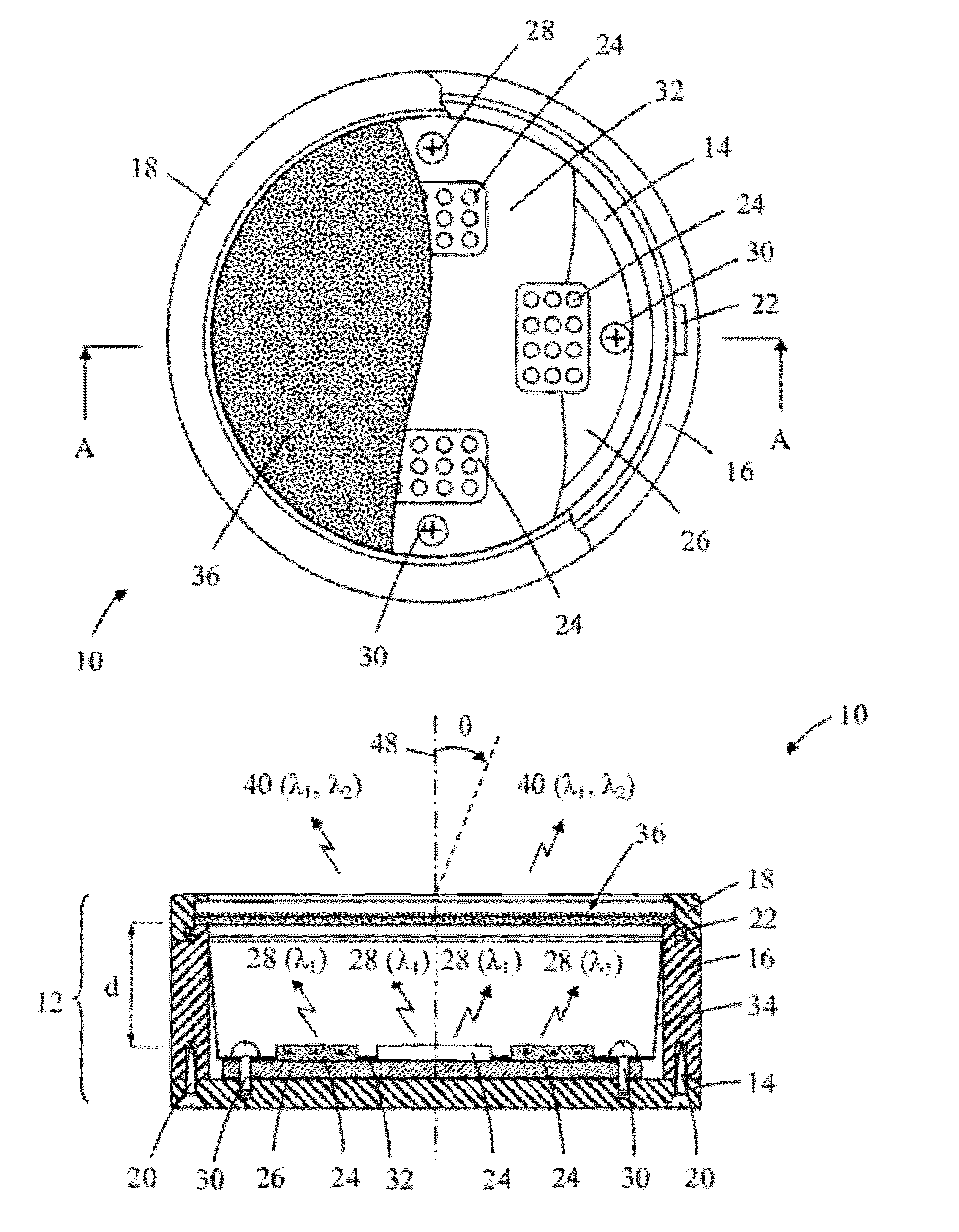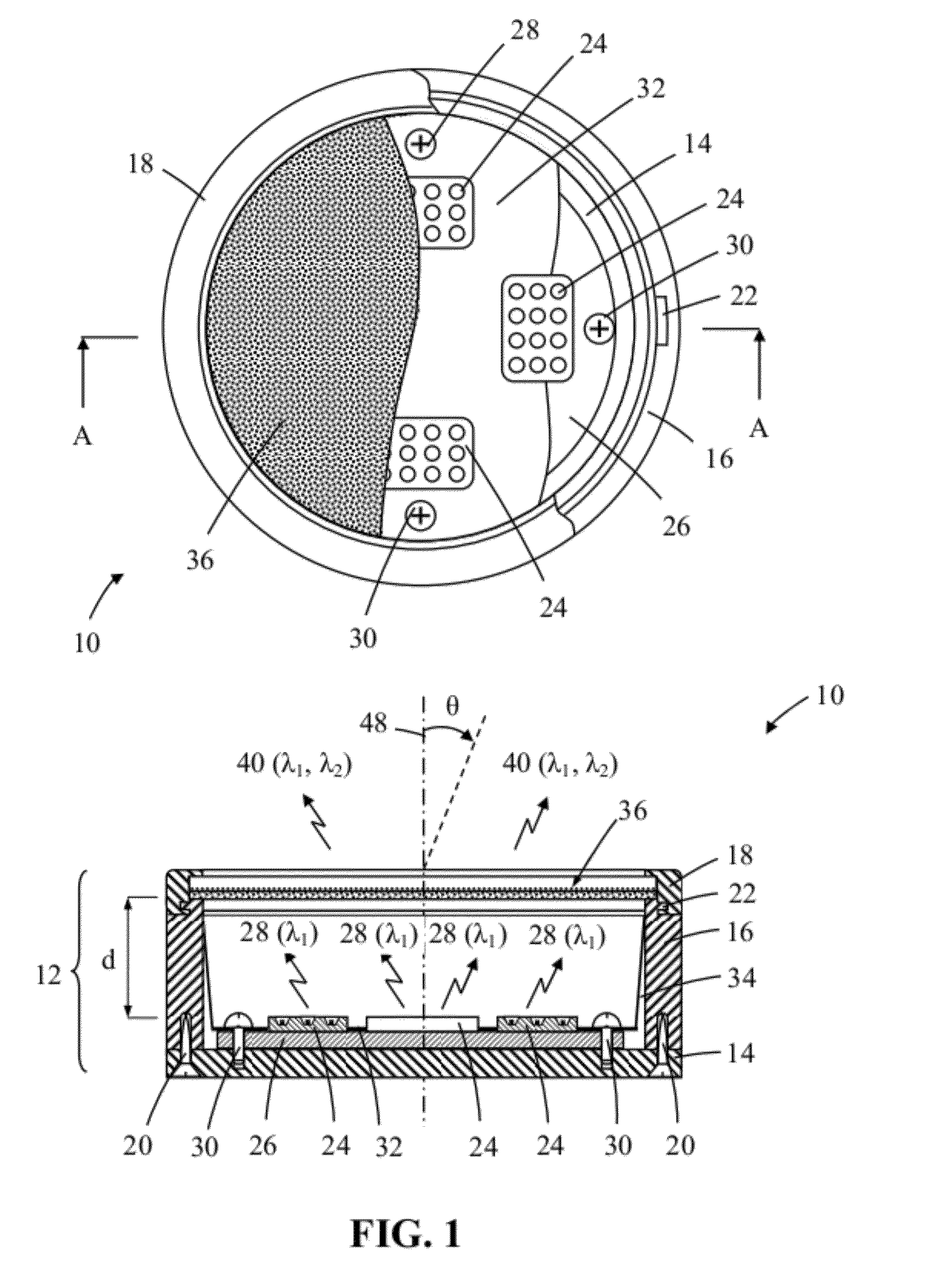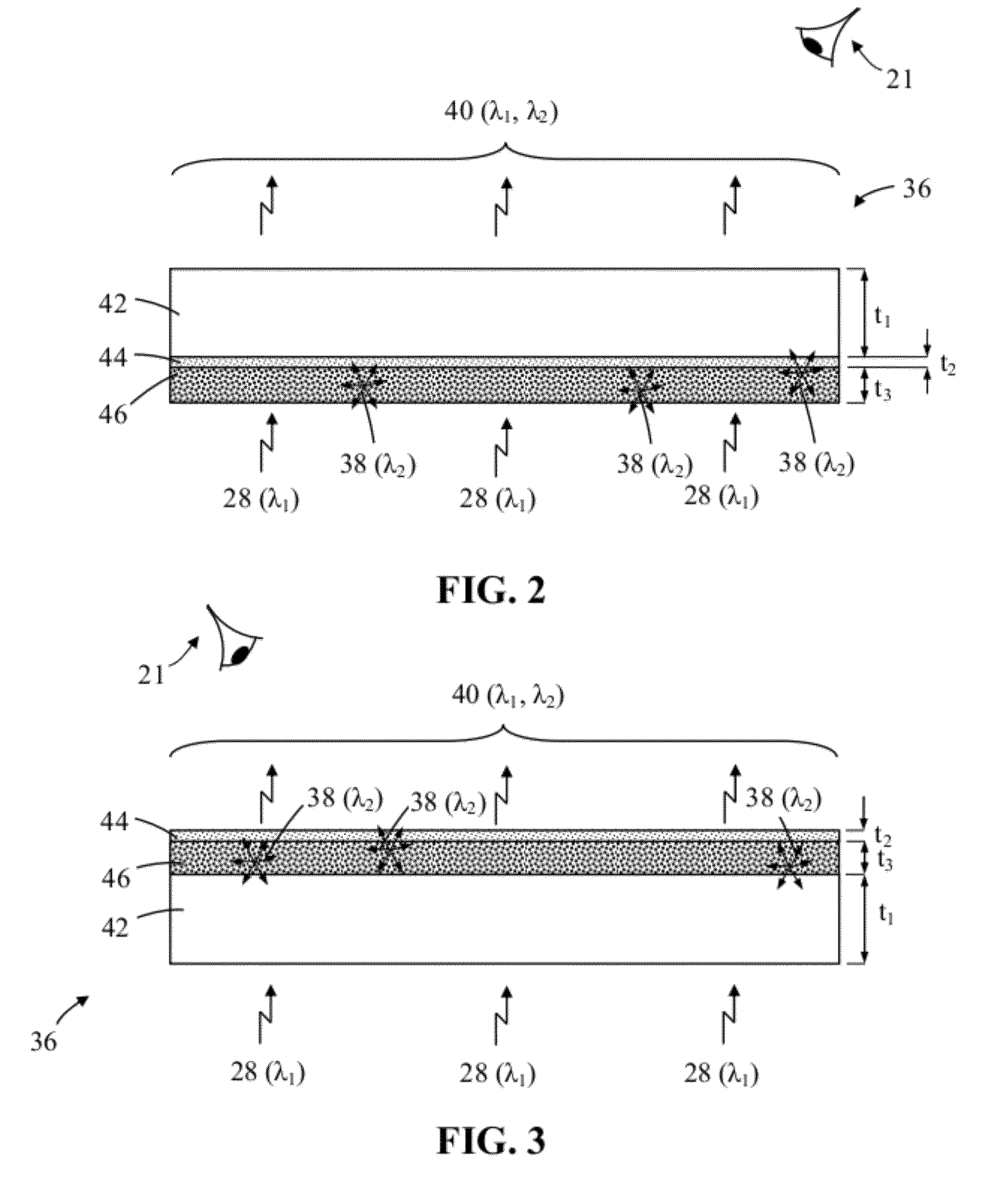Wavelength conversion component with a diffusing layer
a technology of wavelength conversion and diffusing layer, which is applied in the direction of semiconductor devices for light sources, discharge tubes luminescnet screens, lighting and heating apparatus, etc. it can solve the problems of loss of sales to target customers, variation in the color of emitted light with emission angle, and non-white color appearance of devices in off-state, so as to improve the color uniformity of emitted light, and reduce the quantity of phosphor material
- Summary
- Abstract
- Description
- Claims
- Application Information
AI Technical Summary
Benefits of technology
Problems solved by technology
Method used
Image
Examples
Embodiment Construction
[0043]Some embodiments of the invention are directed to light emitting devices comprising one or more solid-state light emitters, typically LEDs, that is / are operable to generate excitation light (typically blue or UV) which is used to excite a wavelength conversion component containing particles of a photoluminescence materials (e.g. phosphor materials), such as a blue light excitable phosphor material or an UV excitable phosphor material. Additionally the wavelength conversion component comprises a light diffusing layer comprising particles of a light diffractive material (also referred to herein as “light scattering material”). One benefit of this arrangement is that by selecting an appropriate particle size and concentration per unit area of the light diffractive material, it is possible to make a device having an emission product color that is virtually uniform with emission angle over a ±60° range from the emission axis. Moreover the use of a light diffusing layer can substant...
PUM
 Login to View More
Login to View More Abstract
Description
Claims
Application Information
 Login to View More
Login to View More - R&D
- Intellectual Property
- Life Sciences
- Materials
- Tech Scout
- Unparalleled Data Quality
- Higher Quality Content
- 60% Fewer Hallucinations
Browse by: Latest US Patents, China's latest patents, Technical Efficacy Thesaurus, Application Domain, Technology Topic, Popular Technical Reports.
© 2025 PatSnap. All rights reserved.Legal|Privacy policy|Modern Slavery Act Transparency Statement|Sitemap|About US| Contact US: help@patsnap.com



